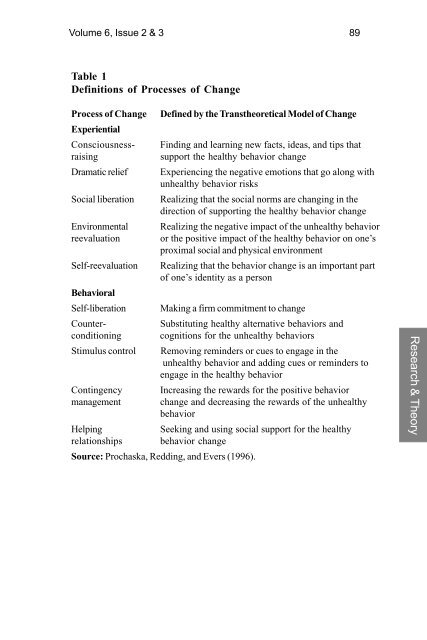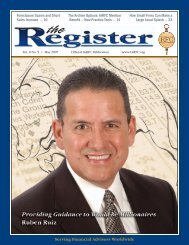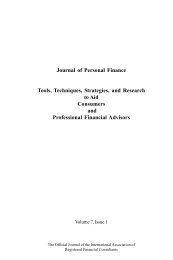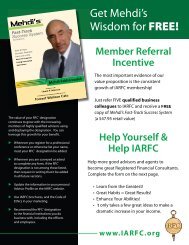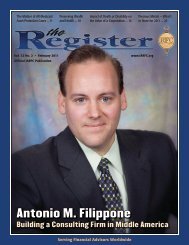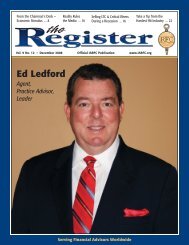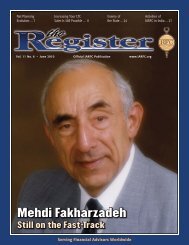3433-vol. 6 issue 2-3.pmd - iarfc
3433-vol. 6 issue 2-3.pmd - iarfc
3433-vol. 6 issue 2-3.pmd - iarfc
Create successful ePaper yourself
Turn your PDF publications into a flip-book with our unique Google optimized e-Paper software.
Volume 6, Issue 2 & 3 89<br />
Table 1<br />
Definitions of Processes of Change<br />
Process of Change<br />
Experiential<br />
Consciousnessraising<br />
Dramatic relief<br />
Defined by the Transtheoretical Model of Change<br />
Finding and learning new facts, ideas, and tips that<br />
support the healthy behavior change<br />
Experiencing the negative emotions that go along with<br />
unhealthy behavior risks<br />
Social liberation Realizing that the social norms are changing in the<br />
direction of supporting the healthy behavior change<br />
Environmental Realizing the negative impact of the unhealthy behavior<br />
reevaluation or the positive impact of the healthy behavior on one’s<br />
proximal social and physical environment<br />
Self-reevaluation Realizing that the behavior change is an important part<br />
of one’s identity as a person<br />
Behavioral<br />
Self-liberation Making a firm commitment to change<br />
Counter-<br />
Substituting healthy alternative behaviors and<br />
conditioning cognitions for the unhealthy behaviors<br />
Stimulus control Removing reminders or cues to engage in the<br />
unhealthy behavior and adding cues or reminders to<br />
engage in the healthy behavior<br />
Contingency Increasing the rewards for the positive behavior<br />
management change and decreasing the rewards of the unhealthy<br />
behavior<br />
Helping<br />
Seeking and using social support for the healthy<br />
relationships behavior change<br />
Source: Prochaska, Redding, and Evers (1996).<br />
Research & Theory


